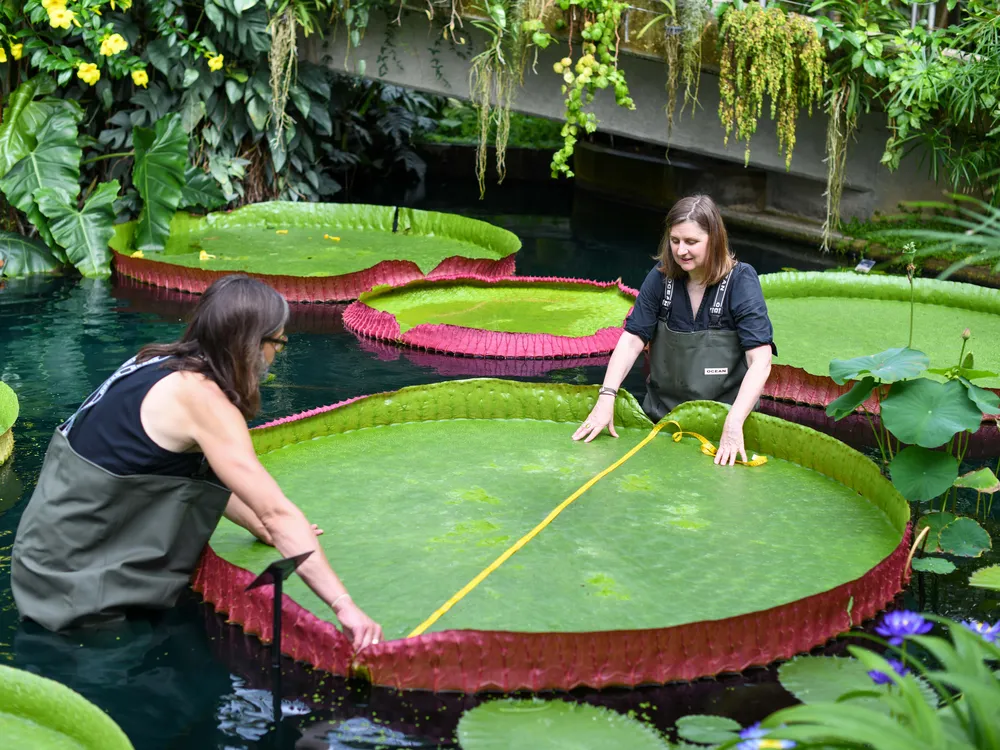Scientists have made an exciting discovery—a new type of giant water lily that was hiding in plain sight. This new species, named Victoria boliviana, was mistakenly identified as another species for many years at London’s Kew Gardens and in the National Herbarium of Bolivia. The revelation came after researchers from Kew collaborated with a team in Bolivia. Their findings were recently published in Frontiers in Plant Science.

Previously, experts at Kew believed the plant was Victoria amazonica, one of the two known types of colossal water lilies named after Queen Victoria in 1852. However, through their joint effort, they determined that it actually belonged to a new species. V. boliviana is now recognized as the largest water lily species in the world. In its natural habitat, its leaves can grow up to nearly ten feet wide and can support a weight of at least 176 pounds. The giant lily is found in freshwater rivers, ponds, and floodplains in northeastern Bolivia.
It produces various flowers throughout the year, with colors transitioning from white to pink, and its surface is covered in sharp prickles. Scientists believe the lily’s large size helps it compete with other plants for sunlight.
Seeds of the new giant water lily were donated to Kew Gardens in 2016 by horticulturalists from the Santa Cruz de La Sierra Botanic Garden and La Rinconada Gardens in Bolivia. As the seeds germinated and grew, Carlos Magdalena, one of the researchers at Kew, noticed that the plants looked different from the two known giant water lily species.
Magdalena was able to identify the distinctions because Kew Gardens is the only place where all three species are grown side by side. The newly discovered plant exhibited variations in prickles distribution and seed characteristics compared to the other Victoria species. To further investigate, Magdalena traveled to Bolivia to observe the plant in its natural environment.
The research team also conducted genetic analysis and discovered that V. boliviana was genetically distinct from the other known giant lily species, but most closely related to V. cruziana. They determined that the common ancestor between V. cruziana and V. boliviana diverged from V. amazonica five million years ago. Additionally, the common ancestor between V. boliviana and V. cruziana separated around a million years ago.
Although V. boliviana was recently discovered, scientists have found that it faces a greater risk of extinction compared to the other two species in the Victoria genus due to its limited geographical range. All three species are under increased threat due to ongoing deforestation in the Amazon. Visitors to Kew Gardens have the opportunity to view all three Victoria species together in the Princess of Wales Conservatory.
Leave a Reply